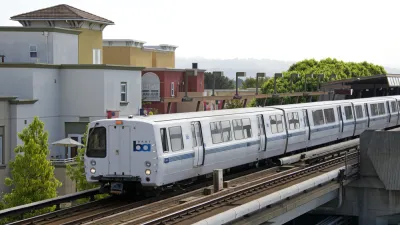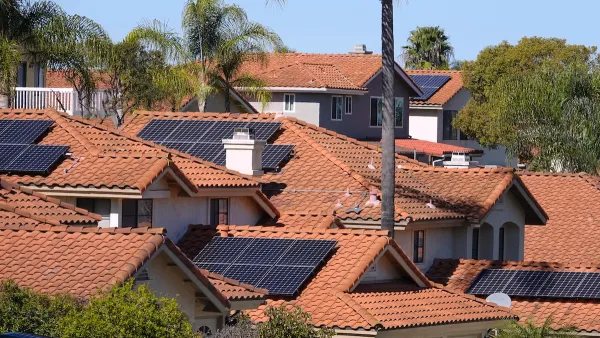California's Bay Area Rapid Transit (BART) has recently been exploring ways to power its system using renewable energy sources, but is it really possible to power one of the state's "top 10 power consumers" with alternative energy?

Moving more than 430,000 passengers across 107 miles of track each weekday requires a massive amount of energy, making BART one of Northern California’s top 10 power consumers. The agency has been investigating ways to obtain more of this energy from renewable sources. As part of this effort, it asked Arup to consider the potential impact of placing photovoltaic (PV) arrays on its substantial real estate holdings.
FULL STORY: Can solar power fuel mass transit?

Analysis: Cybertruck Fatality Rate Far Exceeds That of Ford Pinto
The Tesla Cybertruck was recalled seven times last year.

National Parks Layoffs Will Cause Communities to Lose Billions
Thousands of essential park workers were laid off this week, just before the busy spring break season.

Retro-silient?: America’s First “Eco-burb,” The Woodlands Turns 50
A master-planned community north of Houston offers lessons on green infrastructure and resilient design, but falls short of its founder’s lofty affordability and walkability goals.

Test News Post 1
This is a summary

Analysis: Cybertruck Fatality Rate Far Exceeds That of Ford Pinto
The Tesla Cybertruck was recalled seven times last year.

Test News Headline 46
Test for the image on the front page.
Urban Design for Planners 1: Software Tools
This six-course series explores essential urban design concepts using open source software and equips planners with the tools they need to participate fully in the urban design process.
Planning for Universal Design
Learn the tools for implementing Universal Design in planning regulations.
EMC Planning Group, Inc.
Planetizen
Planetizen
Mpact (formerly Rail~Volution)
Great Falls Development Authority, Inc.
HUDs Office of Policy Development and Research
NYU Wagner Graduate School of Public Service


























